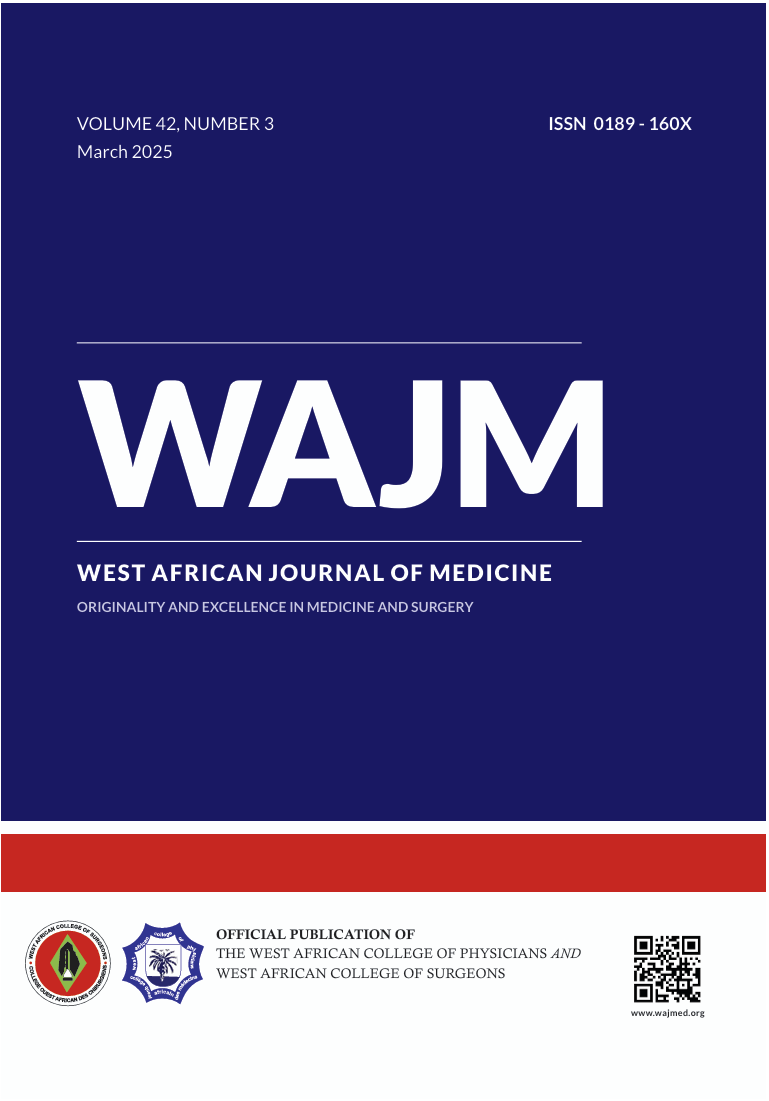ORIGINAL: Risk of Insufficient Hydroxyvitamin D Levels in Diabetic Foot Ulcers in Rivers State Nigeria
West Afr J Med. March 2025; 42 (3): 225-230 PMID: 40845204
Abstract
Background: The global increase in diabetes, especially in developing nations, has escalated complications like diabetic foot ulcers. Hypovitaminosis D is considerably prevalent among individuals with Type 2 Diabetes Mellitus (T2DM) and chronic vascular complications. The aim of this study was to determine the association between vitamin D levels and foot ulcers among patients with T2DM.
Methods: This study population comprised 88 individuals with diabetic foot ulcers (DFUs) and 88 individuals with T2DM without DFUs. Vitamin D levels were assayed using blood samples according to standard methods. An independent t-test was done to analyze the difference between serum vitamin D levels in both groups. Pearson's correlation coefficient and linear regression analysis were also performed.
Results: Majority of participants in the DFU group presented with Grade 2 and Grade 3 ulcers (Wagner's classification). There was a significant difference in serum vitamin D levels, indicating lower levels among cases (mean of 19.6 ng/ml ± 13.6) compared to controls (mean of 36.2 ng/ml ± 11.4) with a p-value of 0.014. Data shows 84.1% of persons with foot ulcers had deficient/insufficient serum vitamin D levels, while only 29.5% persons without DFU had deficient/insufficient vitamin D levels. Regression analysis shows that persons with DFU were 12.6 (6.0 - 26.2) times likely to have deficient/insufficient vitamin D levels. Chi-square analysis shows that the distribution of the DFU severity was significantly higher among persons with deficient serum Vitamin D levels (p = 0.0001).
Conclusion: Lower serum vitamin D levels are significantly associated with diabetic foot ulcers (DFUs). Screening for and correcting vitamin D deficiency may potentially improve the outcome in patients with diabetic foot ulcers.


